MarketAxess and Finadium recently surveyed 16 large market participants to better understand the current state of readiness for the Securities Financing Transactions Regulation (SFTR). The results of the survey show that while some progress has been made, there may be a substantial build still ahead. Market participants can use the results of the survey to benchmark their own efforts towards readiness. A guest post from MarketAxess.
Only 40% of firms are more than halfway ready
With less than 8 months until SFTR phase 1 implementation go-live, it’s a little disconcerting to see that many firms are still only in the early stages of preparation. In fact, even the most advanced firms are only at 75% completion and over half the firms surveyed have yet to select their key implementation vendors.
What we’ve learned with previous regulatory changes, such as EMIR, is that there is no such thing as starting too early or being too prepared, and that having the right project partners is critical to timely compliance.
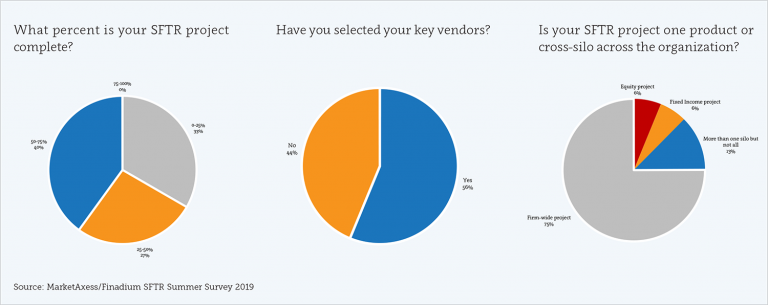
The good news is that most firms are preparing for SFTR across the organization, as opposed to approaching it on a silo basis. This simplifies the process of deciding on vendors based on individual or multiple asset classes and will support future expansions as necessary.
Transaction volumes – how much to report?
The majority of firms surveyed expect to report between 1,000 and 100,000 transactions daily, including lifecycle events, however many believe that it could go much higher. Reportable transaction volumes will determine what decisions are needed when it comes to resourcing and choosing the solution that works for you: high volumes will require a greater level of end-to-end automation and Straight-through Processing (STP); a low volume of transactions could mean more manageable manual processing and therefore less need for automation. However, be wary: volumes can be volatile and can happen quickly without notice. No one wants to be caught out when volumes increase.

Priorities in vendor selection
Our survey respondents put market and regulatory expertise top of the list, with price (which we also interpret as cost-efficiency) second. This indicates that vendors who can partner best-of-breed technology with consultative expertise and strong project management capabilities are the strongest fit. These results align with Finadium findings in recent projects showing that clients are looking for targeted product solutions coupled with subject matter expertise.
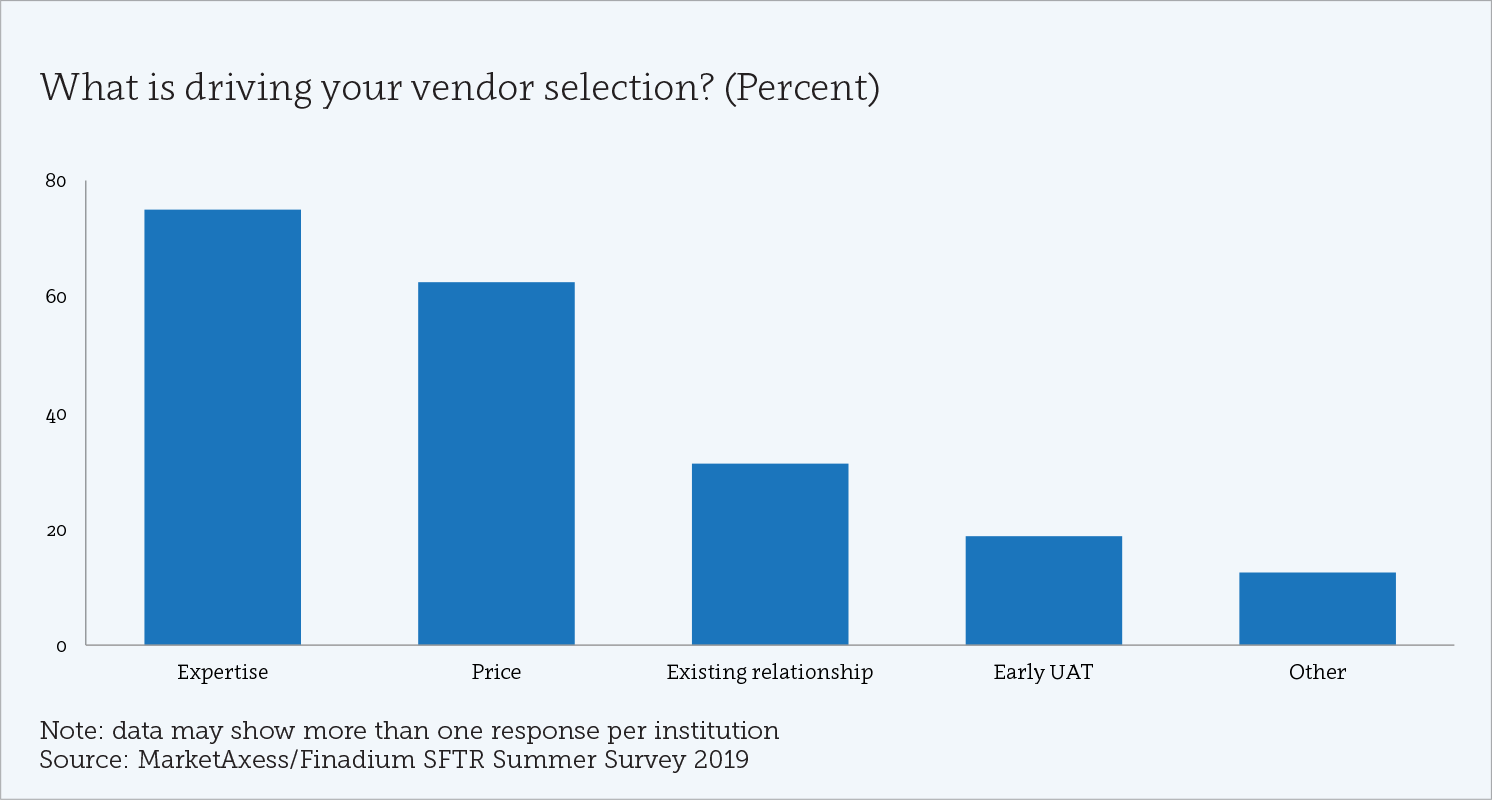
The ability to simplify the problem is also key. Streamlining a process that contains many different players and elements was high on the wish list for potential SFTR solutions. Ideally, any good solution will avoid the need for higher-risk third party add-ons or connections to additional unnecessary platforms. This means reporting firms should leverage one single or at most a joint solution for the entire process chain, or alternatively choose the specific areas where they need support to complement internal processes or technology.
Unique Transaction Identifiers (UTIs): the key focus area?
UTI generation and sharing was highlighted in the survey as the key ask for a technological solution industry wide. As would be expected, it appears that most firms are looking first to contract-compare systems to generate UTIs, where trades are off venue. However, what is surprising is the large number of respondents who are still not sure about UTI generation and sharing. We would advise fast decision making here, especially since firms may need to determine what their vendors can do relative to internal capabilities.
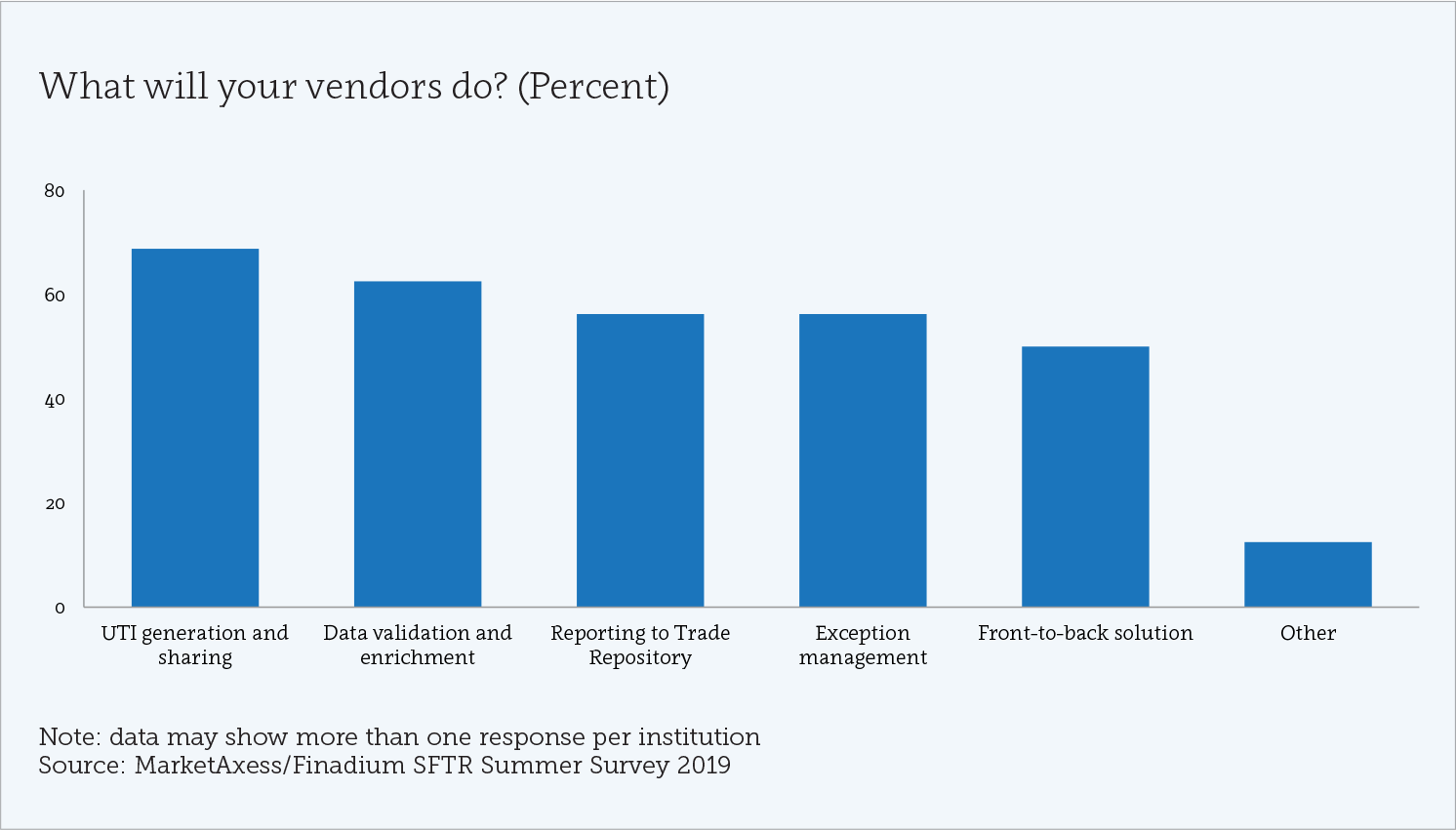
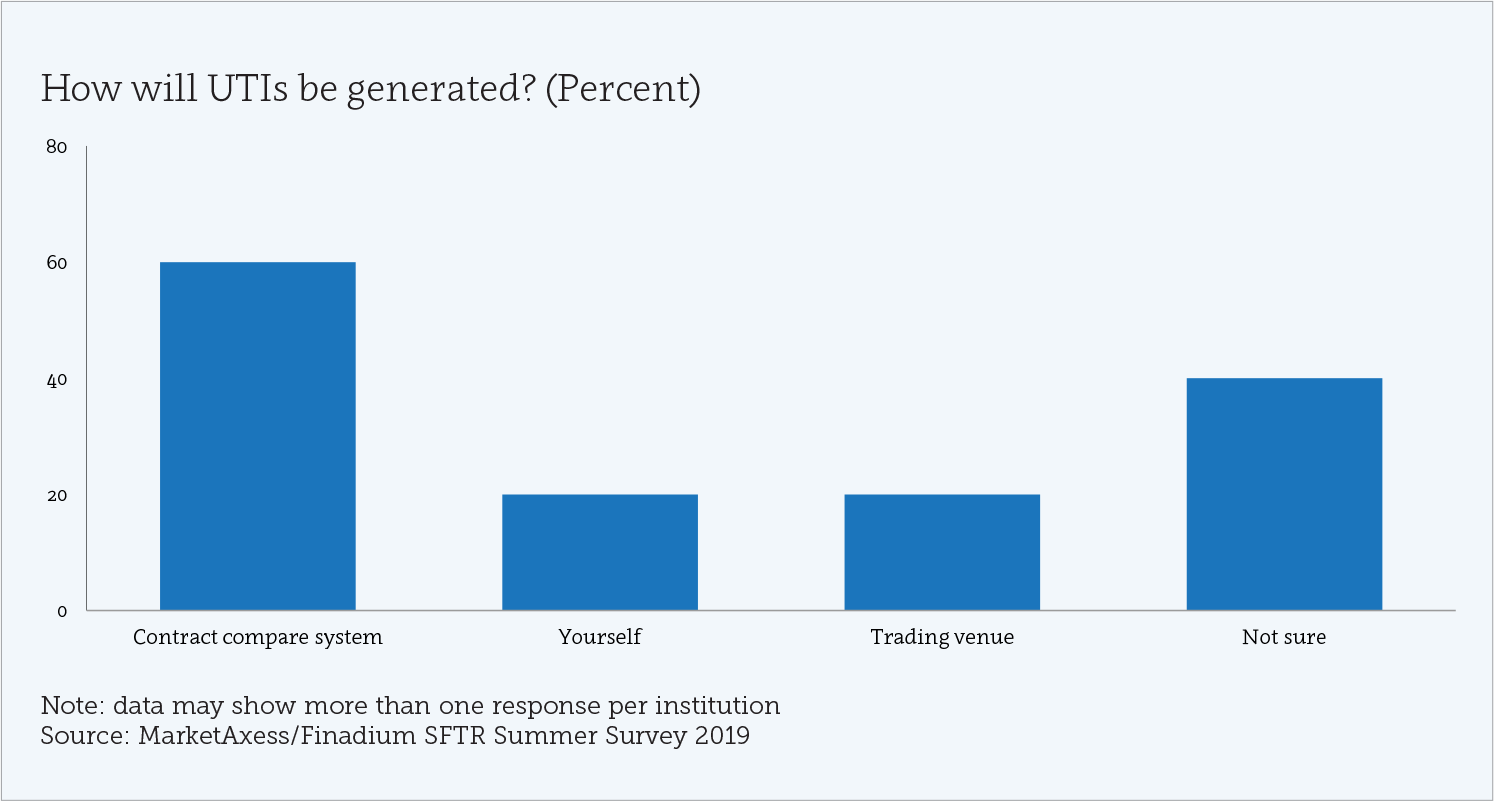
Looking ahead: what happens after go-live?
With many firms still preparing for implementation, post-go-live plans are also falling behind: only 30% of respondents have resourced for operations after implementation. We found a split in the market between agent lenders and prime brokers preparing to support delegated reporting for clients. Given the diversity of client types (beneficial owners, hedge funds, non-financials) that will need delegated reporting services, this was expected.
While getting ready for the regulatory deadline is the priority, it is crucial not to ignore this wider operational planning. Firms should carefully consider go-live teams and processes to ensure implementation is as smooth and effective as possible.
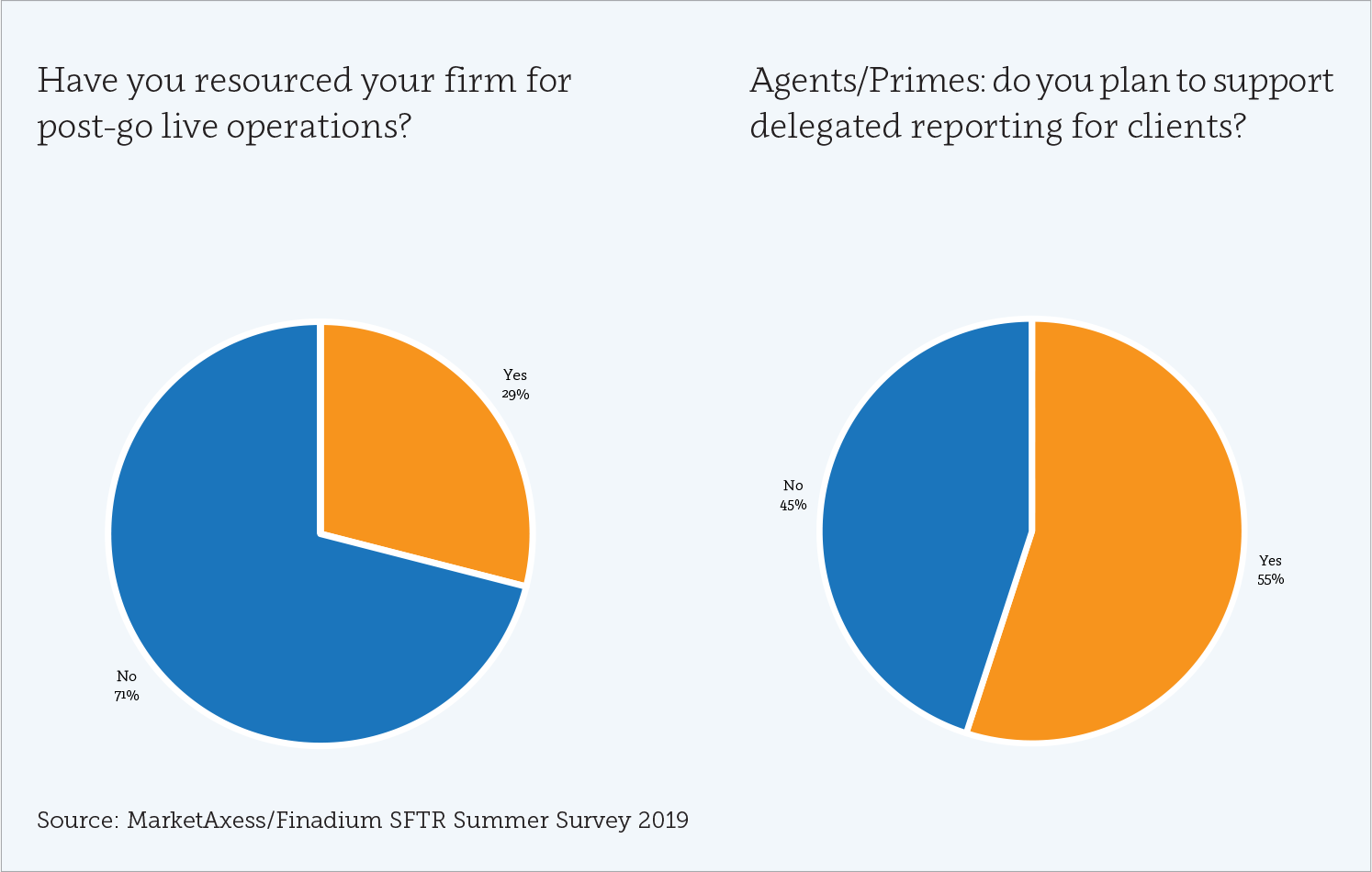
Mitigating the big risks
Aside from the UTI challenge, the biggest risk in the run-up to SFTR, according to the firms we spoke to, is simply being ready to report on day one. With potentially significant fines awaiting those who are not compliant, we can absolutely see why.
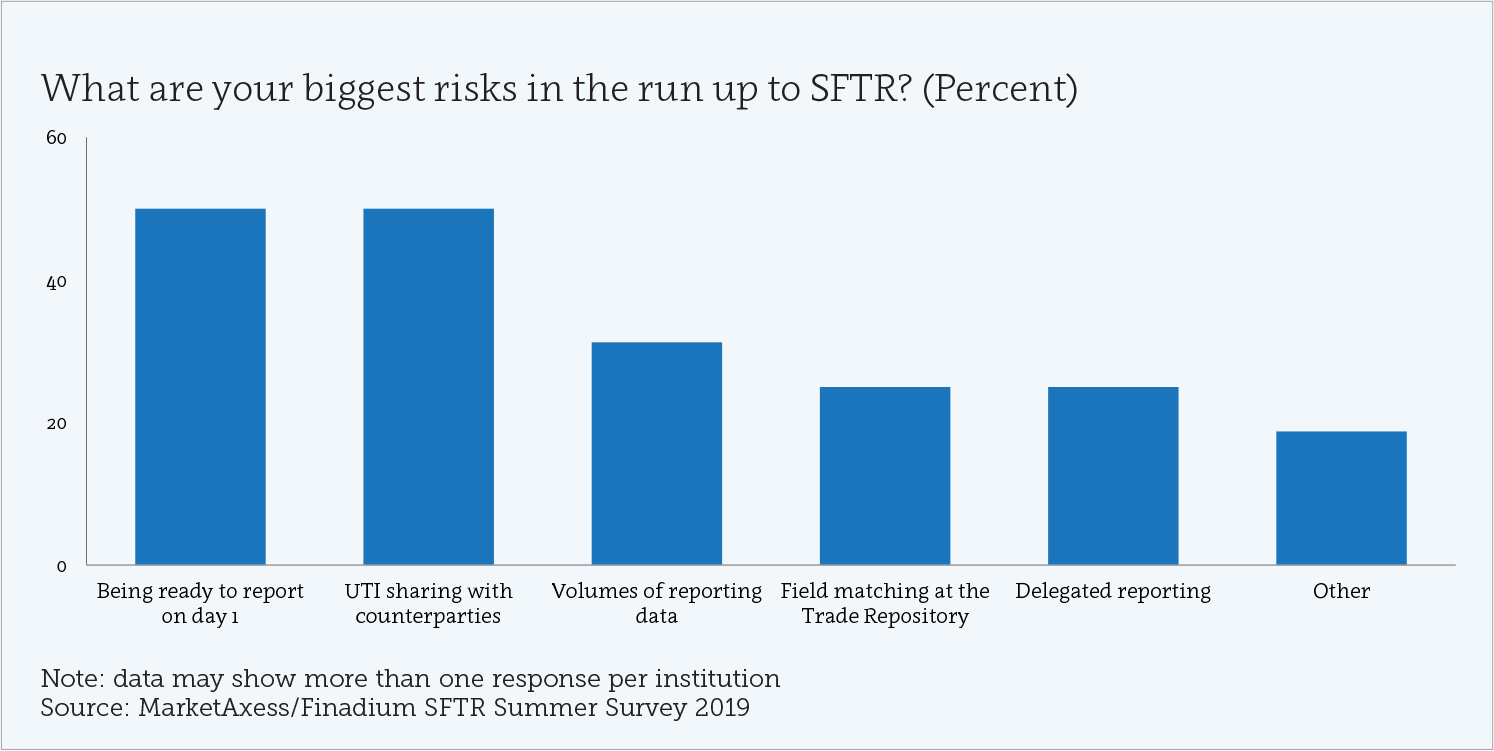
 Encouragingly, most firms who fall in phase 1 go-live (April 2020) are aiming to start user acceptance testing (UAT) soon. We recommend allowing 6 months for testing, which means starting this October to be ready for April 2020. Even phase 3 go-live firms may be counterparties to a phase 1 firm that will need information from you in April 2020. This seems to be a key forgotten factor by many across the industry.
Encouragingly, most firms who fall in phase 1 go-live (April 2020) are aiming to start user acceptance testing (UAT) soon. We recommend allowing 6 months for testing, which means starting this October to be ready for April 2020. Even phase 3 go-live firms may be counterparties to a phase 1 firm that will need information from you in April 2020. This seems to be a key forgotten factor by many across the industry.
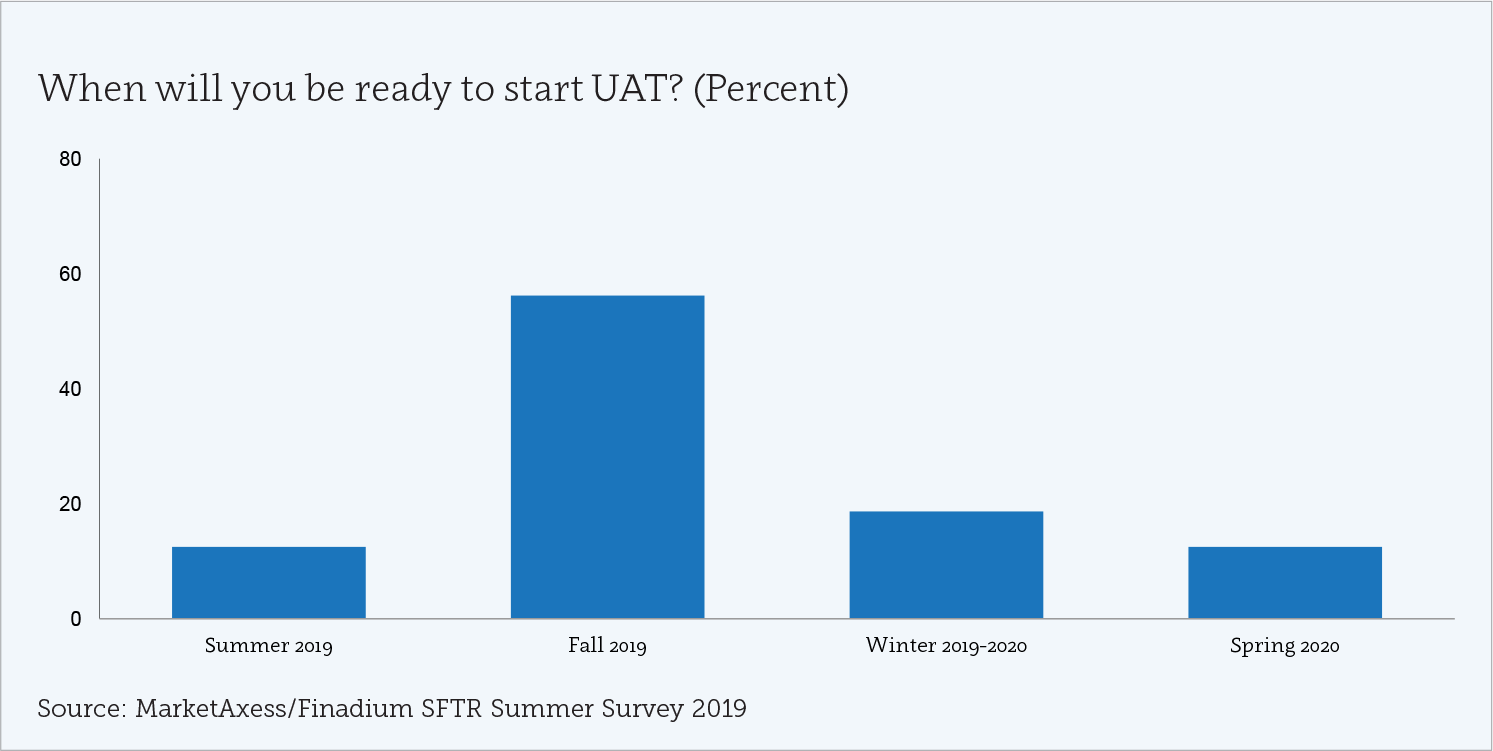
As with other regulatory changes, during preparation unexpected issues can often be identified that need to be resolved. This is why some MarketAxess clients commenced UAT at the beginning of the summer, giving them the opportunity to start early and ramp up preparations. By testing early, you can ensure any issues are ironed out with plenty of time to spare. Depending on the complexity of your client set-ups, it could take longer than you think.
About the Author
 Sunil Daswani, Senior Consultant, Securities Lending, MarketAxess
Sunil Daswani, Senior Consultant, Securities Lending, MarketAxess
Sunil is currently Senior Consultant for securities lending solutions at MarketAxess, with a particular focus on the firm’s new SFTR solution. He joined MarketAxess from Northern Trust, where he was most recently Head of the International Securities Lending business. In the years prior to this, he held a number of senior roles at Northern Trust, including head of Sales & Relationship Management for Capital Markets in EMEA and APAC. He has served on numerous securities finance industry associations across those regions, most notably holding the position of Chairman of PASLA (Pan Asian Securities Lending Association). He is regularly quoted as an expert on securities lending and regulatory change.


